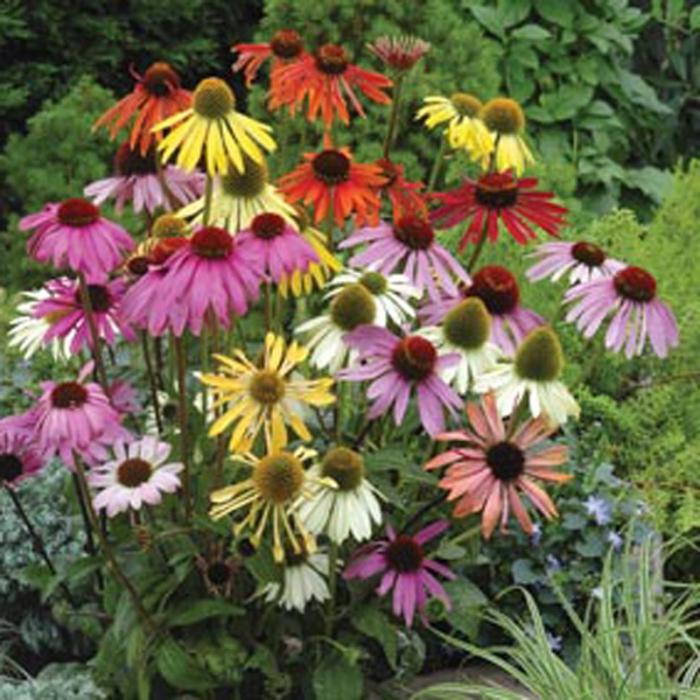Echinacea purpurea flowers (in Latin - Echinacea purpurea) were brought to us from the east of the USA. The plant is perennial, with large, beautiful purple flowers resembling chamomile. The flowering period depends on the climate and falls mainly in the second half of summer.
Echinacea flowers are wonderful honey plants that attract bumblebees, butterflies, and bees. The plant is recommended for planting in gardens and orchards for better pollination of other plants. Echinacea flowers are not particularly fastidious to grow, able to survive on water-permeable soils of any composition, in partial shade or in the open sun, however, it is preferable to plant it on soils moist, fertile and slightly alkaline. No special care is needed.
Echinacea flowers, photo:
The vitality of plants can be compared with the vitality of pharmacy chamomile. Cultivation is possible both through sowing directly into the ground (in the spring, immediately after warming the ground), and by planting seedlings. Wide spacing (40 cm) is preferred.

It is very convenient to propagate Echinacea flowers by dividing bushes from growing plantations, which are best carried out either before flowering (in early spring) or after flowering (late autumn). In any case, you need to divide the plantations of Echinacea at least once every four years. Seeds are harvested at the end of the season (they are easily taken from the blackened dried seed boxes). These seeds are sown the next year in a cool (but not cold) period, at an air temperature of 12 degrees. To achieve earlier flowering, you can sow seeds at the very beginning of winter and grow seedlings in the usual way for townspeople - on the windowsill. The seedlings are grown up to 15 cm in height and after that they are planted in the flower garden, in an already permanent place. A plant grown in this way will bloom in the second year, and then will bloom every summer.
Echinacea flowers can please the eye for more than two months, but flowering only occurs in the second year after sowing. If you are not going to propagate this plant by seeds, then removing already faded heads will help extend the flowering period by at least two weeks.
In autumn, before the onset of frost (end of season), the stems of the plant should be cut (shortly, to the ground, without damaging the root) and mulched with a generous layer of fertile garden soil or garden compost with leaf humus. In regions with cold winters, echinacea is additionally covered using spruce branches (pine or spruce branches) or well-dried hay (without signs of debate).
Tall Echinacea flowers look great in mixborders (mixed flower beds), lower varieties can be planted on the front lines. Echinacea in "gardens for the lazy" is very natural. It goes well with dahlias, and rudbeckia, and yarrow, and monarda, and salvia, and heliotrope, and many other plants, including decorative cereals. Echinacea flowers are also suitable for bouquets. In addition, they stand in vases for quite some time.
Traditional medicine uses echinacea as an immunostimulating, antimicrobial, antifungal agent. The plant is effective in the fight against warts, accelerates the healing of ulcers and wounds, reduces pain. It can be used for overwork (physical, mental), it is often recommended after radiation and cytostatic therapy, after antibiotic therapy. Sometimes it causes an allergy. In pharmacies, it is sold in the form of extracts and tinctures.